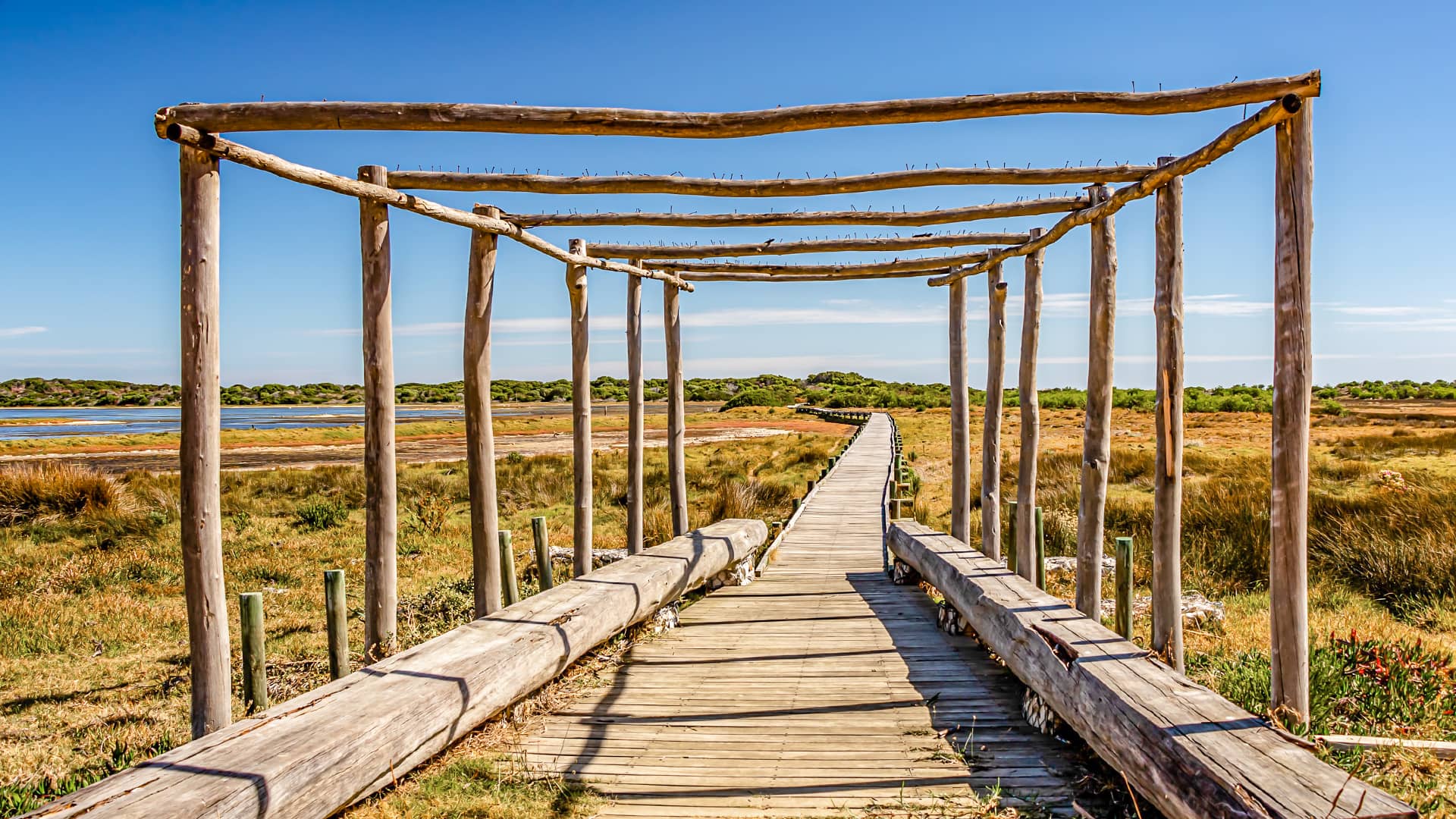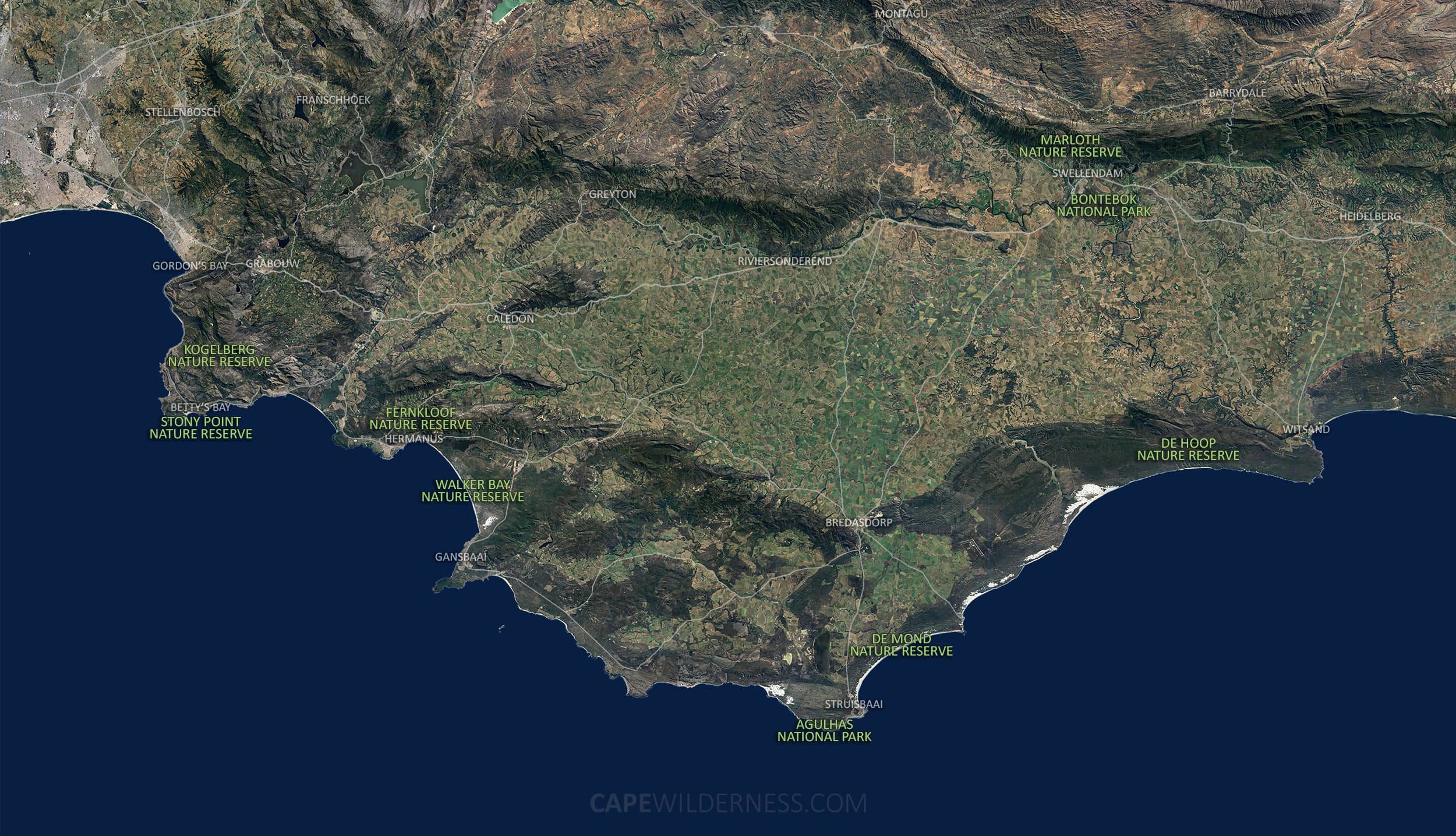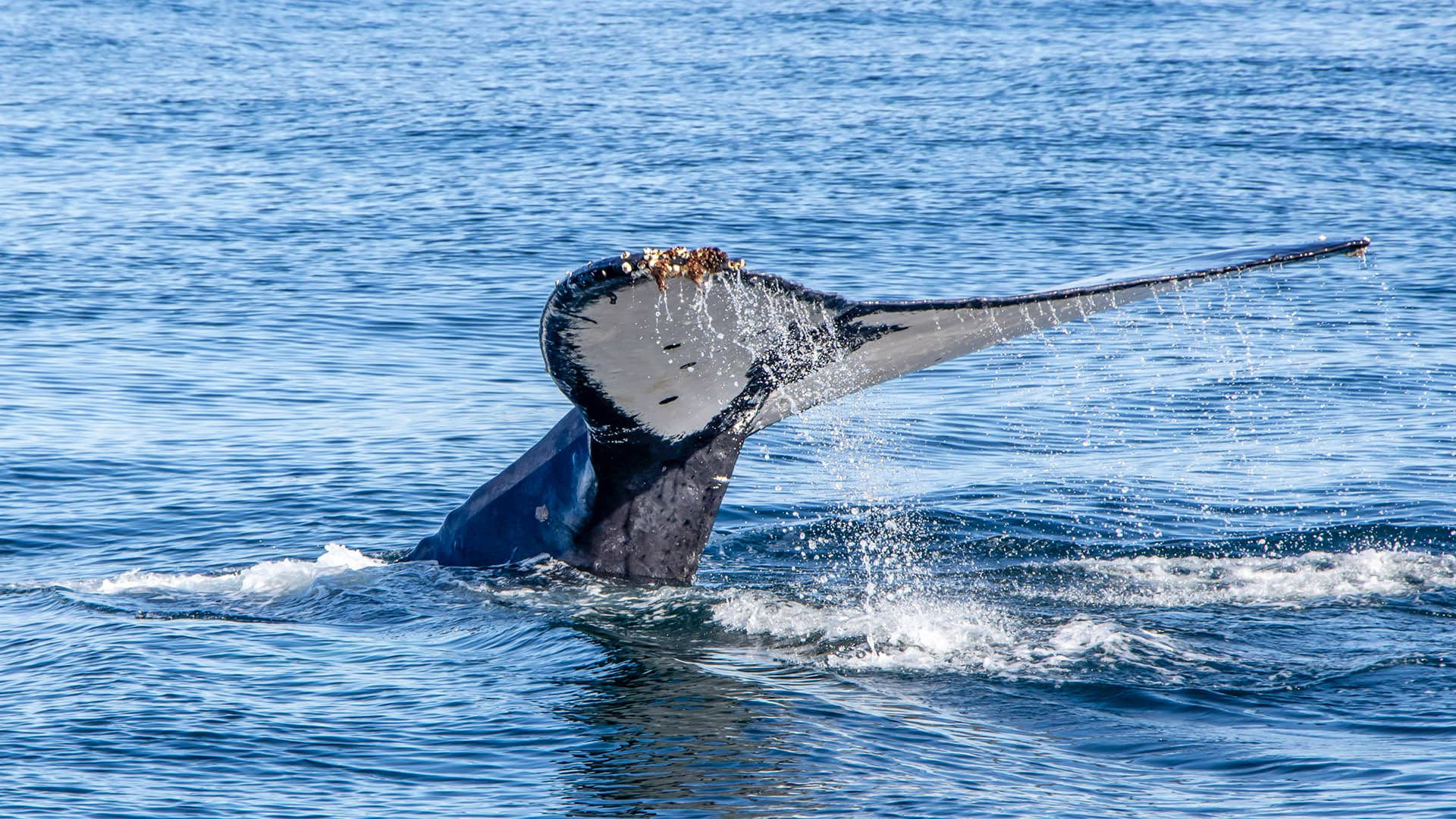Over the mountain: a world of rugged coastlines, indigenous fynbos and abundant marine life
Overberg
The Overberg, home to the Whale Coast, is a region with rugged mountain ranges, gentle hills covered in wheat and canola fields, a wealth of indigenous Fynbos and a beautiful coastline. This is also where you can find the southern-most tip of the African continent and the second land-based African Penguin colony of South Africa.


You would be surprised how many nature reserves and national parks this region has. Many of them are located along the coastline, like De Hoop Nature Reserve, De Mond Nature Reserve, Agulhas National Park and Walker Bay Nature Reserve. These parks and reserves offer a wide range of landscapes and activities. Ranging from long sandy beaches, sand dunes and fynbos covered hills to rocky coastlines, crags, valleys and mountains.
A major attraction of the Overberg is whale watching. The coastline between the Kogelberg Nature Reserve and Quoin Point Nature Reserve is called the Whale Coast. Every year, between June and November, Southern Right Whales come to these waters putting on spectacular displays of breaching and tail slapping. Although whales can be seen along most of South Africa’s coastline, the Whale Coast offers exceptional whale watching opportunities, both from land and sea.
But whales aren’t the only marine attractions here. Stony Point Nature Reserve has a colony of African Penguins, Great White Sharks patrol these coastal waters, there are many colonies of playful Brown Fur Seals and dolphins play in the surf.
The Overberg has a remarkable floral diversity. Most of the reserves and mountains are covered in Fynbos, which are characterized by Erica, Protea and Restio species. The best flower displays can usually be seen between August and October. A good place to see Fynbos is the Kogelberg Nature Reserve, often referred to as the heart of the Cape Floral Kingdom.


WHERE
IS THIS REGION
LOCATED
PARKS & RESERVES

Agulhas National Park
The Agulhas National Park is located on the Southern Tip of Africa, at the meeting point of the Indian and Atlantic Ocean. The national park is a piece of land mostly covered in Fynbos and has a beautiful and rugged coastline. There are over 2000 different plant species here and some saltpans and wetlands that provide refuge for birds and amphibians. Although one of the smaller national parks of the country, it is a beautiful place with rugged nature, plentiful birds to watch, hiking trails, a wide range of flora and opportunities for whale watching.

De Hoop Nature Reserve
The De Hoop Nature Reserve is a hidden gem along the coastline of the Western Cape and is bypassed by many tourists. The reserve consists of a couple of different habitats like wetland, sand dunes, mountains, Fynbos, a Marine Protected Area and a sandy and rocky coastline. It is in this MPA that you can find the finest examples of inter-tidal ecosystems in the rock pools and the best way to appreciate it is by snorkeling. Most of the reserve is covered in Fynbos, boasting a wealth of bird, mammal and plant species to discover. And with little dangerous game, hiking is safe.

Fernkloof Nature Reserve
The Fernkloof Nature reserve is located all around Hermanus, from its coastline, up into the mountains. This reserve is particularly known for its diverse plant life. Making up only 0.002% of the Cape Floral Kingdom, it is home to 14% (over 1300) of the plant species of that kingdom. No other place on earth has this many species in such close proximity. It has some beautiful mountainous areas and a small patch of evergreen forest. The 60km network of paths offer 4 suggested trails, but endless opportunities.

Marloth Nature Reserve
The Marloth Nature Reserve is located in the Langeberg Mountains, just north of Swellendam. The vegetation is predominantly mountain Fynbos with patches of indigenous forest. The reserve is regarded a dream for flora enthusiasts because of the incredible variety and abundance of wild flowers. Rich in hiking trails, ranging from 2 to 21km in length, that lead you into shady green forest with streams, rock pools and waterfalls.

Walker Bay Nature Reserve
The Walker Bay Nature Reserve is a coastal reserve, located south of Hermanus and Gansbaai. The 17km long coastline of the reserve seems to go on for miles and miles. This coastline is characterized by unspoiled white beaches and rocky limestone outcrops. A variety of hikes along the coast are available, you can access the Klipgat Caves and Walker Bay is often referred to as one of the best spots for land-based whale-watching.

Bontebok National Park
The Bontebok National Park is located just south of Swellendam and lies between the Breede River and the Langeberg Mountains. These mountains often provide a beautiful backdrop. The park was established in order to save the endangered Bontebok. Although the park is the smallest of the 19 national parks in South Africa, it has the highest density of rare and endangered bird species, Fynbos and wildlife species. The park is known for its simplistic beauty and peaceful charm.

De Mond Nature Reserve
The De Mond Nature Reserve is located between Struisbaai and Arniston and covers the mouth of the Heuningnes River. This river mouth is a breeding ground for various bird species and home to many reptiles, crustaceans and seahorses. This reserve has an endless beach, coastal dunes covered in Fynbos, crashing waves and a river estuary. The 7km Sterna Trail winds through the reserve and provide excellent opportunity to see the plethora of seabirds, such as the African Oystercatcher, Damara and Caspian Tern.

Kogelberg Nature Reserve
The Kogelberg Nature Reserve is located to the north of Betty’s Bay and Kleinmond and is often referred to as the heart of the Cape Floral Kingdom. The reserve is filled with mountain peaks, craggy kloofs, valleys and boasts exceptional diversity and quality of Fynbos. There are three patches of indigenous forest which include Yellowwood, Stinkwood and Boekenhout trees. With many day hikes ranging from 5-24km and a multi-day hike, Kogelberg is waiting to be explored on foot.

Stony Point Nature Reserve
The Stony Point Nature Reserve is located on a rocky shoreline of Betty’s Bay. The main purpose of this very small reserve is the conservation of the African Penguin colony that lives here. Boulders Beach and Stony Point are the only 2 mainland colonies of African Penguins in the Western Cape. The boardwalks provide excellent observation on the 2000 breeding pair, but also on the 4 cormorant species (Bank, Cape, Crowned and White-breasted) that breed on the outer rocks. Stony Point is quieter and less of a tourist mecca, compared to Boulders Beach.


FLORA & FAUNA
The coastline between the Kogelberg Nature Reserve and the Quoin Point Nature Reserve is called the Whale Coast. This is a stretch of coastline that is famous for its whale and dolphin spotting. Within this stretch of coast lies the town Hermanus, which is one of the best land-based whale watching places in the world. The shallow waters along the coastline of Hermanus, Walker Bay Nature Reserve and De Hoop Nature Reserve are ideal to spot Southern Right Whale (in spring), dolphins and the Great White Shark.


The landscape of the Overberg consists of flat land, used for agriculture, mountains to the north and a sandy/rocky coastline. It boasts some 2500 plant species, of which 300 are endemic. One of the reasons this number is so high is because the Kogelberg Nature Reserve lies in this region. This reserve has an exceptional diversity and quality of Fynbos, earning it the nickname of the heart of the Cape Floral Kingdom. This nature reserve alone has some 1800 plant species.
The Overberg used to be home to many animals associated to South Africa’s savanna landscape. Lions, rhino’s, hyena’s, herds of antelope, zebras and hippos were all present when the Europeans arrived in the 1600s. Nowadays much smaller species roam freely in this region. Leopard, African Clawless Otter, Cape Fox, African Wildcat, Ratel, Bat-eared Fox, Caracal, Grey Rhebok, Bush Duiker, Cape Grysbok, Steenbok and Klipspringer to name a few. But some of the national parks and reserves have introduced larger and regional extinct mammals such as Bontebok, Mountain Zebra, Hartebeest, Common Hippopotamus, Giraffe and Black Wildebeest.
The rolling hills, covered in wheat, are favored by the Blue Crane, South Africa’s national bird. The Overberg is one of the best regions to see this bird. But there is another icon living here, the African Penguin. At Stony’s Point Nature Reserve lives a colony of thousands of these birds.
The Fynbos covered and mountainous areas also support other birds like Rameron Pigeon, flamingos, canaries, flycatchers, Cape White-eyes, Cape Sugarbird, Sunbirds and many raptors. Potberg, at the De Hoop Nature Reserve, is home to the only remaining breeding colony of Cape Griffon in the Western Cape.
Hikers should be on the lookout for Puff Adders, Cape Cobra, Boomslang and the Mountain Adder. These are some of the most common snakes in the Overberg. You should also look at the upper branches in trees and shrubs for the Cape Dwarf Chameleon, as they climb to the top of the vegetation in the morning to bask in the sun.

